Armenia,Georgia and Azerbaijan occupying a mountainous zone on the southern flank of the Caucasus Mountains, sit on one of the earth’s greatest crossroads. Their fate and history have been to a great extent influenced or decided by their powerful neighbours namely Turkey, Russia and Iran. I planned a 23-day trip to see three countries and spend 10 days in Armenia. The Armenians are nice, hospitable and proud of their ancient civilization. I visited a total of nine impressive churches and monasteries including the World Heritage properties at Echmiatzin, Zvartnots, Haphpat, and Geghard. I also ventured to Nagorno-Karabakh and visited the Gandzasar monastery.
As a small nation, Armenia has been subject to control or subjugation of neighbouring superpowers. It went through a difficult period in the first century AD with the advent of the Parthian and the Roman Empires. With the rise of Islamic power in the VII century, Armenia fell this time under the yoke of the Arab Caliphate. It had a notable rise in its economic, spiritual, cultural and political life beginning from mid-IX century and Fortress Ani (now in Turkey) was the capital.
The Seljuk Turks invaded Northern Armenia in 1064 while another Armenian kingdom – Cilicia occupying land on the southern coast of the Mediterranean lasted from 1080 to 1375. This kingdom left a rich cultural heritage scaling new heights in arts and sciences.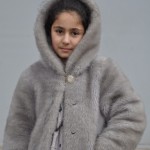
Armenia later fell prey to the Moguls, troops of Lenk Timur and Persia’s Shah Abbas the Great resulting with Western Armenia passing to Turkey and Eastern Armenia to Persia in 1639. Armenia looked to Russia’s support in its struggle against Turkey and Persia. As a result of the 1828 Turkmencha Accord, Eastern Armenia was passed to Russia. Following the 1877-1878 Russo-Turkish war, the Western Armenia marz of Kars was united with Russia.
Armenia has a most traumatic history in the 20thcentury. It is estimated that 1.5 million Armenians were killed as a result of the 1915-23 genocide in Turkey while half-a-million survivors scattered around the world (i.e. the Armenian Diaspora). After WW1, Armenia gained its independence in May 1918 and the Armenian Soviet Socialist Republic was established in 1920. Following the breakup of the former Soviet Union, Armenia re-gained independent statehood and became a republic. Armenia celebrated its 4100th anniversary of its statehood in 1993.
Religion
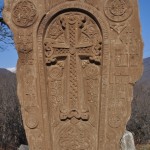 The Armenian Apostolic Independent Church is followed by about 90% of the Armenia. They believe in Monophysite i.e. the divine and human nature of Jesus Christ combined in one body. The differences between the Armenian Church and the Catholic and Orthodox faiths are subtle.
The Armenian Apostolic Independent Church is followed by about 90% of the Armenia. They believe in Monophysite i.e. the divine and human nature of Jesus Christ combined in one body. The differences between the Armenian Church and the Catholic and Orthodox faiths are subtle.
Armenians are religious and all the three World Heritage sites in Armenia, namely the Monasteries of Haphpat and Sanahin, the Cathedral and Churches of Echmiatsin and the archaeological sites of Zvartnots and the Monastery of Geghard and the Upper Azat Valley, all of which are related to their religion.
Day 1 (Monday December 12): Istanbul, Turkey – Kiev, Urkrane – Yerevan, Armenia
I prefer to travel overland. As the border between Turkey and Armenia has been closed since 1993, one has to travel by land to Iran or Georgia. As I was not fit enough to make a trip to Eastern Turkey on my way to Georgia or to take a 40-hour bus ride through Georgia to Armenia, I decided to fly. The cheapest ticket I could get is one from the Ukraine Airline which still cost me over US$300!
The flight left after 10am and I arrived at the Kiev airport around noon. I only had 50 minutes to board the next flight to Yerevan. The Kiev airport is unbelievably chaotic due to poor management and design. Two airport staff checked passengers’ tickets and passport before allowing them into the screening areas where there were only four x-ray machines. There were hundreds of irritatedpassengers. I had no choice but jumped queue and managed to board the departing plane at 12:30pm. An airport is a good indication of a place’s outlook, economic development and progression, efficiency, and organization capability. The Kiev airport is one of the worst airports I have been through in recent years!
Armenia is two hours head of Turkey and I arrived in Yerevan at 6pm (local time) at the airport just before sunset. I saw Mt Ararat at its best. The two peaks stand above boundless land mass with veils of clouds or mist in all sorts of shiny golden and orange colours. It looks heavenly!
The visa service at the airport is efficient. I filled in a form, changed money nearby and got my visa after paying 3000ADM. The new airport just opened this year is modern and well-designed, user-friendly, bright and airy. What a big contrast to the one at Kiev!
I booked a cheap family-run hotel online and took a taxi with no problem. The people are all polite and helpful. The receptionist ordered a take-away roast chicken with grilled vegetables and bread for less than US$10. The chicken was so juicy, tender and tasty. I like the chicken so much that I had the same for the next two days!
Day 2: Yerevan
I went straight to the Armenian History Museum and the National Art Gallery which are housed in the same building. I am impressed by the excellent collections of the clay pots (some dating 2400 BC), ceramics (dating 9-13th century), bronze and jewelry. The exhibits are well-presented with explanations. Viewers can read and appreciate the display without effort (This is not an easy task). Four hours passed quickly.
I went the travel agent which organized the group tour starting December 18 and was greeted by Mrs Ani, a charming, beautiful and most helpful Armenian lady. She suggested a 4 day -3 night side-trip to Noravank (near Areni), Sisian, Goris and Stepanakert. As it would be too costly to take a car and driver for four days and the weather was uncertain, I decided to first take a marshrutka (a public minivan) to Areni where Mrs Ani would arrange a driver to pick me up. He would then take me to Sisian. I could hire a car for sight-seeing the following day and to take me to the next destination. This would be more economical and gave me maximum flexibility. As few Armenians speak English, Mrs Ani worries I might get lost! I therefore brought a sim card so that I could call her for help anytime. (It did not work as the card did not function!).
Day 3: Yerevan – Sisian (200km, driving 4 hrs)
According to the timetable, the minivan would be leaving at 9am. I arrived at the station at 8:45am and there were already three passengers on the bus. The 16-person minivan is very old and the driver refused to leave till there were enough passengers who would each pay AMD 2000 (about US$9.5). We finally set off with 10 passengers at 10:15am! On the way, he picked up seven more passengers including a child plus some goods!I always enjoy meeting the locals.
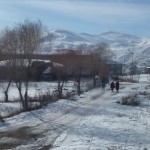 This ride indeed gives me lots of fun and a glimpse into the life of the normal Armenians living outside Yerevan. I was fortunate to have Ashley, an American girl working for the Peace Corp, on the bus who acted as my interpreter. She explains that life is slow and people do not care much about time. Most people living in the rural areas are poor living on subsistence farming and on remittances from aboard. Communication is a real problem as few people speak English. Hence I changed my plan and decided to skip Noravank and go straight to Sisian.
This ride indeed gives me lots of fun and a glimpse into the life of the normal Armenians living outside Yerevan. I was fortunate to have Ashley, an American girl working for the Peace Corp, on the bus who acted as my interpreter. She explains that life is slow and people do not care much about time. Most people living in the rural areas are poor living on subsistence farming and on remittances from aboard. Communication is a real problem as few people speak English. Hence I changed my plan and decided to skip Noravank and go straight to Sisian.
On the bus, I met an old lady whose first question was about my age. In return, I asked her age. She said “76”. She looked healthy and younger. When Ashley told her and other passengers about my age, they looked surprised as they thought I would be much younger (What a compliment). The old lady could not believe and touched my face and hair and felt my skin (perhaps to check whether I had Botox!). She had a very heavy woolen coat on and was worried that my thin jacket would not be warm enough. She touched my arm and my chest/breast to feel the goose down jacket I had on. As she is an old country lady, I did not take offence at her behaviours and simply laughed it off.
I then saw a 7th century memorial at Aghitu and the 1000-year old Vorotnavank which is perched on a cliff. Baghdasar then took me to see the Melik Tangi Bridge which was constructed in 1855. Unfortunately, it was already too dark by 6pm to appreciate the scenery.
 |
I had an early dinner with most delicious grilled chicken and green salad, all of which were local products. They barbecue the meat as it gives the best and natural favour. I agreed and found the chicken most delicious!
Day 4: Sissian – Tatev Monastery – Goris – Caves – Goris (90km)
Tatev built on a natural fortress of rocks on the edge of Vorotan Canyon, is an impressive fortified monastery with two churches, dining halls, libraries, living quarters and a large oil mill. The main church Surp Poghos-Petros (St Paul and St Peter) was built in the 9th century with Surp Grigor Church next to it. The monastery an important centre of learning was home to 600 monks at its peak. National icon St Grigor Tatevatsi (1346-1409) was buried here.
I also visited the Khndzoresk caves located some 10km from Goris. Frankly, I find the caves in Goris which is within walking distance more interesting and picturesque.
I stayed in the Mirhav Hotel, which is said to be the best place to stay in southern Armenia. I totally agree and find the food simple, fresh and excellent.
Day 5: Goris – Nagorno-Karabakh – Stepanakert – Vank – Shushi – Goris (280km; driving 6 hrs)
I had a quick stop in Vank and was invited by the locals to have tea with them in a hotel café. They looked at my Lonely Planet with great curiosity.
I was not happy as I spent most of the day in the car. The scenery is not bad though it would be much better in the summer. I wished I had a guide so that he/she could explain the place and history to me.
Day 6: Goris – Yerevan (250km; driving 4 hrs)
I took a shared taxi for 4000AMD and set off at 1015am with three Armenian men. I was lucky as one of the passengers, Smbat, an engineer, speaks English. He works for a hydro-electric plant at Goris and has a 5-month old baby boy. He again asked how old I am and why I am not married. He told me that an engineer graduate would earn about US$300 a month. Life in Yerevan is expensive and one needs about US$1000 to lead a decent life!
The journey was pleasant and I was back to Yerevan within four hours. I moved to Marriott Hotel where the group would be staying. Yerevan is known for its cultural life and vibrancy with lively outdoor cafes and music in the summer. There was a free concert at the Music Hall next to the History Museum. The hall with some 350 seats was full. The four singers Carlos, Sophia, Hovan and Aram are fantastic and we applauded heartily for their excellent performance. (See Part 2)


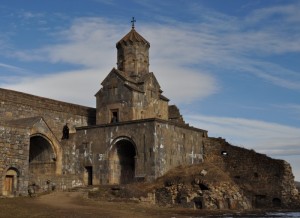
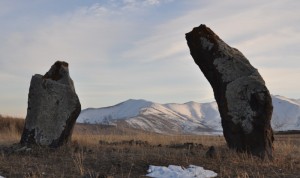
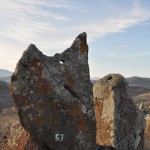
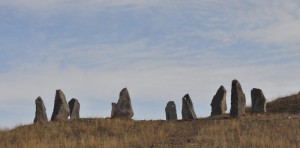
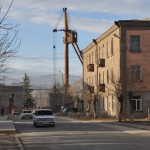
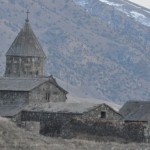
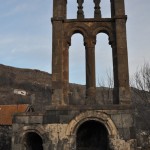
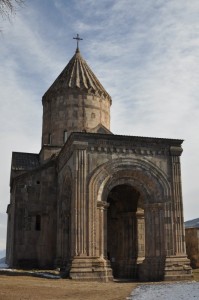
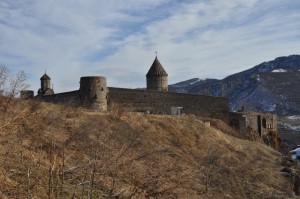
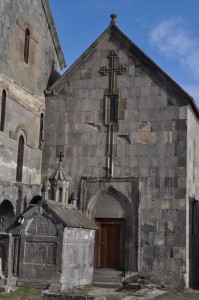
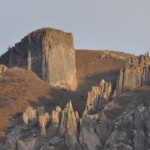
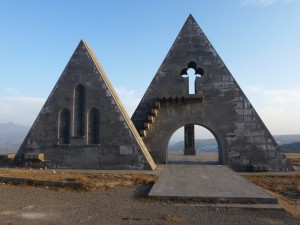
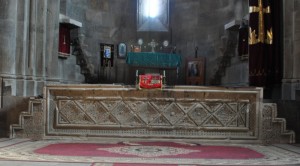
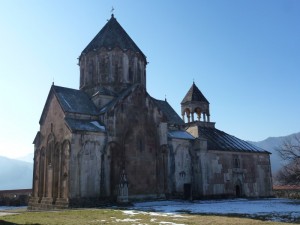
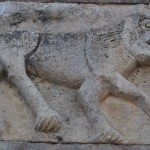
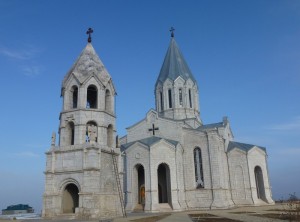
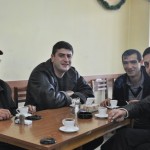
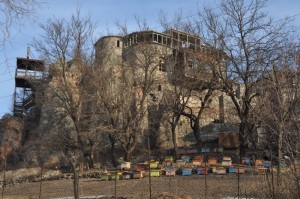
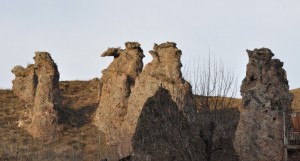
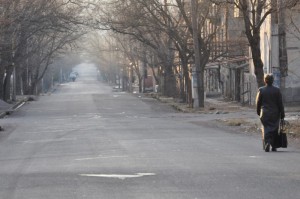
HI SARAH
Thank you for photo